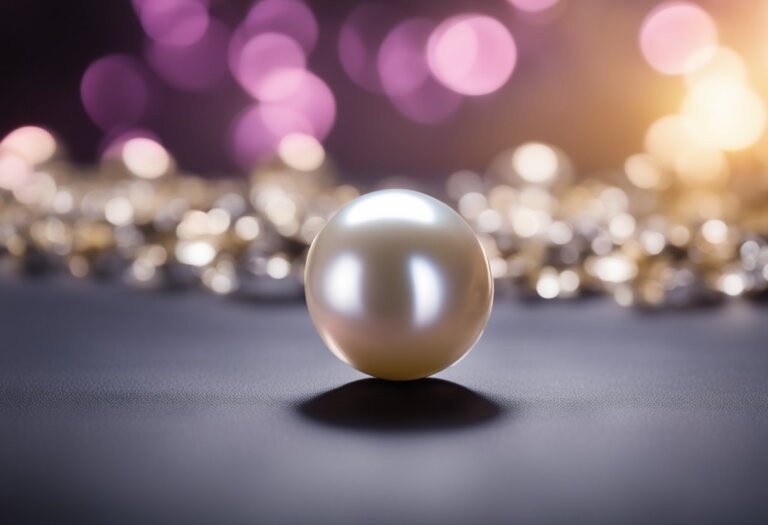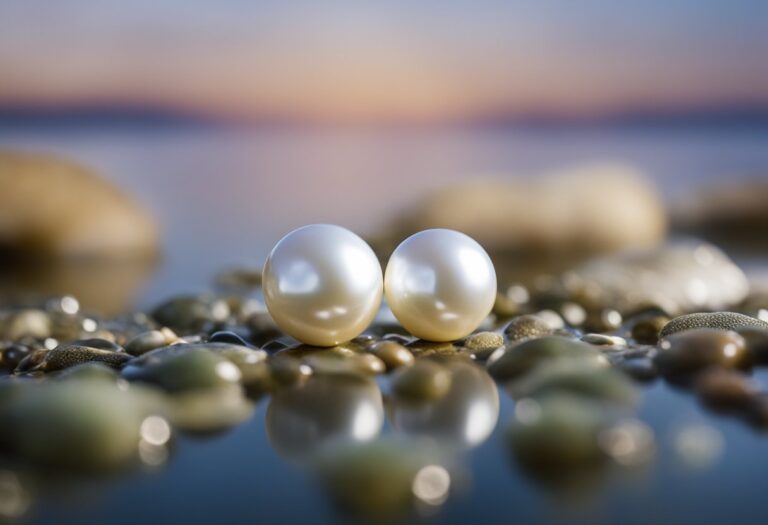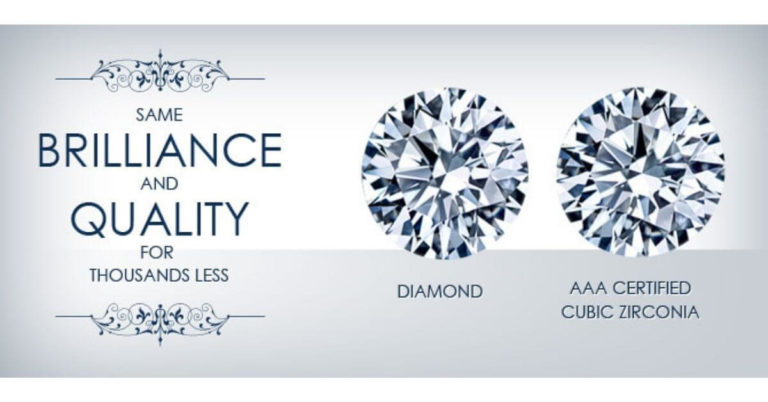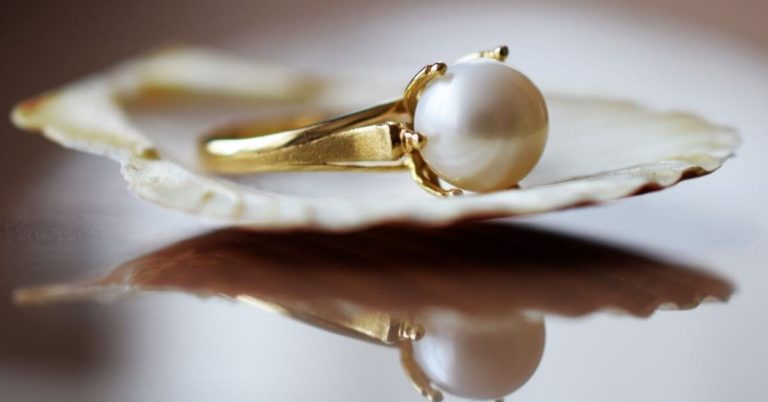Baroque Pearls: Comprehensive Guide of An Unique Pearl Beauty
Baroque pearls are a type of pearl renowned for their unique shapes and captivating beauty. Unlike the classic round pearls, baroque pearls boast an asymmetrical form that makes each one of a kind.
Their distinctiveness embodies a sense of individuality and has become a beloved choice in fashion and jewelry design.

The creation of baroque pearls occurs naturally or within cultured environments, but it is their irregularity that sets them apart.
- Come in various sizes and colors, providing a wide array of options for designers and pearl enthusiasts.
- Incorporated into pieces where their irregular shapes can be showcased, becoming the focal point of a necklace, ring, or earring set.
Your appreciation for baroque pearls connects you to a history of adornment where the singular beauty of the pearl has been celebrated.
In selecting a piece of baroque pearl jewelry, you embrace both the tradition of pearls and the contemporary trend for pieces that reflect your personal style.
Understanding Baroque Pearls
Baroque pearls are renowned for their unique and irregular shapes, offering a distinct alternative to the traditional round pearl. They stand out as individual pieces due to their varying forms and textures.
Defining Characteristics
Baroque pearls lack a defined axis of symmetry, resulting in irregular shapes that can range from slight distortions to highly non-uniform profiles. The allure of these pearls lies in their unique contours, making each one a one-of-a-kind gem.
Types of Baroque Pearls
- Cultured Baroque Pearls: Grown inside farmed oysters with the help of human intervention.
- Natural Baroque Pearls: Formed in the wild without any human contribution.
Each type exhibits a diverse array of shapes, influenced by their environment and harvesting methods.
Pearl Formation and Nacre
Pearl formation begins when an irritant enters an oyster’s muscular tissue. Over time, the oyster secretes nacre, layer by layer, to encapsulate the irritant. In non-nucleated baroque pearls, this process may start without direct human intervention, resulting in their distinct and unpredictable forms.
Baroque Pearl Varieties

Baroque pearls offer a world of diversity, each with unique traits and origins, from freshwater lakes to the vast salt oceans.
Freshwater Versus Saltwater
Baroque pearls come from both freshwater and saltwater sources.
- Freshwater pearls generally grow in mussels living in lakes and rivers and come in a variety of shapes like potato pearls, rice pearls, and more whimsical forms.
- Saltwater pearls, including the luxurious South Sea and Tahitian pearls, originate from oceans and are often larger with a higher luster.
Different Shapes and Sizes
The allure of Baroque pearls is in their variety of shapes and sizes. The non-spherical nature ranges from minor aberrations in traditional pearls to distinctly unique forms in keshi pearls, coin pearls, potato pearls, stick pearls, and teardrop pearls. Akoya pearls can also be baroque, though they are typically known for being more spherical.
Color and Luster
Your baroque pearl’s color and luster are indicative of its type and origin. The luster of saltwater pearls like Tahitian and South Sea pearls is often high, reflecting light with a mirror-like sheen.
The colors can vary widely from white to black, with stunning overtones that add depth and beauty. Freshwater pearls display softer luster but offer an extensive palette of colors, from pink to peach to lavender.
Incorporating Baroque Pearls into Jewelry

Baroque pearls offer creative freedom with their irregular shapes, making them perfect for unique jewelry designs that stand out.
Baroque Pearl Jewelry Styles
Your choice of baroque pearl jewelry can range from bold statement pieces to subtle accents. Baroque pearl necklaces often showcase the pearl’s unique contours by allowing each pearl to dictate the design.
Pearl strands may alternate baroque pearls with round pearls for a textural contrast, while pearl pendants and baroque pearl earrings often use the pearl’s singular shape to create a focal point.
Pearl rings and pearl earrings that feature baroque pearls bring a touch of personality to classic jewelry pieces.
Selecting Baroque Pearls for Jewelry
When selecting baroque pearls for your jewelry, consider symmetry and unique shapes that complement the overall design. While not symmetrical like classic pearls, baroque pearls should still balance within the piece.
Affordability is often a benefit, as the value of baroque pearls can be more accessible compared to their round counterparts. Choose baroque pearls that enhance the creative jewelry designs you envision, turning them into personalized statement pieces or adding a unique flair to a pearl necklace.
Cultural and Fashion Significance

Baroque pearls have shaped the narrative of beauty with their unique allure. They redefine elegance and showcase the beauty in imperfection.
Baroque Pearls in History and Culture
Baroque pearls emerged as symbols of wealth and status in the Renaissance. Monarchs and the aristocracy prized them for their irregular shapes, presenting a stark contrast to the conformist, round pearls.
These natural gems often served as central elements in elaborate jewelry pieces and were a staple in royal portraits. Their popularity soared as an emblem of luxury and affluence.
The French dictionary once defined pearls, including baroque varieties, largely by their ability to capture and reflect light, producing captivating overtones on their surfaces.
Modern Trends and Celebrities
Today, baroque pearls cater to a wide array of fashion preferences. They have become accessible to more people, reflecting a versatile trend that oscillates between high fashion and everyday wear.
Celebrities have embraced these pearls on the red carpet, signaling a revival in their popularity.
- The imperfect shapes, from twin pearls to heart pearls, resonate with consumers seeking individuality.
- The organic look of misshapen, off-round, or semi-baroque pearls suits various styles, from the canning jewel aesthetic to minimalist designs.
Wearers appreciate that no two baroque pearls are alike, each telling its own story, much like the narrative of a fish in an endless sea – each journey unique, every pattern telling a different tale.
How to Care For Baroque Pearls

Baroque pearls are unique and require special attention to maintain their luster and beauty. It’s important to handle them gently due to their organic nature. Here are some essential care tips:
- Cleaning: After each wear, wipe your baroque pearls with a soft, damp cloth. For a deeper clean, use mild soap with lukewarm water. Avoid chemicals or abrasive cleaners.
- Storing: Store your pearls separately from other jewelry to prevent scratches. Wrap them in a soft cloth or place them in a pouch. A lined jewelry box is also suitable.
- Wearing: Put on your pearls after applying makeup, perfume, and hairspray. These substances can damage the pearl’s surface.
- Restringing: Have your pearls restrung periodically. This prevents strand breakage.
Here’s a quick reference table for do’s and don’ts:
| Do’s | Don’ts |
|---|---|
| Wipe with a soft cloth after wearing. | Expose to harsh chemicals. |
| Use mild soap for occasional cleaning. | Store with metals or hard gems. |
| Store in a soft cloth. | Wear when showering or swimming. |
| Restring annually if worn often. | Clean with abrasive materials. |
Remember, regular care extends the life of your baroque pearls. They’re an irreplaceable addition to your collection. Handle with care and they will retain their charm.
- Freshwater Pearl Symbolism and Spiritual Meaning: Unveiling Mystical Associations
- How to Choose The Best Earrings for Your Face Shape (with Pictures and Celebrities)
- Earrings Styles: Popular Types of Earrings with Pictures
- Freshwater Pearl vs Cultured Pearl: Unraveling the Mysteries
- Cultured Pearls: Real and Elegant Gem At Affordable Price






